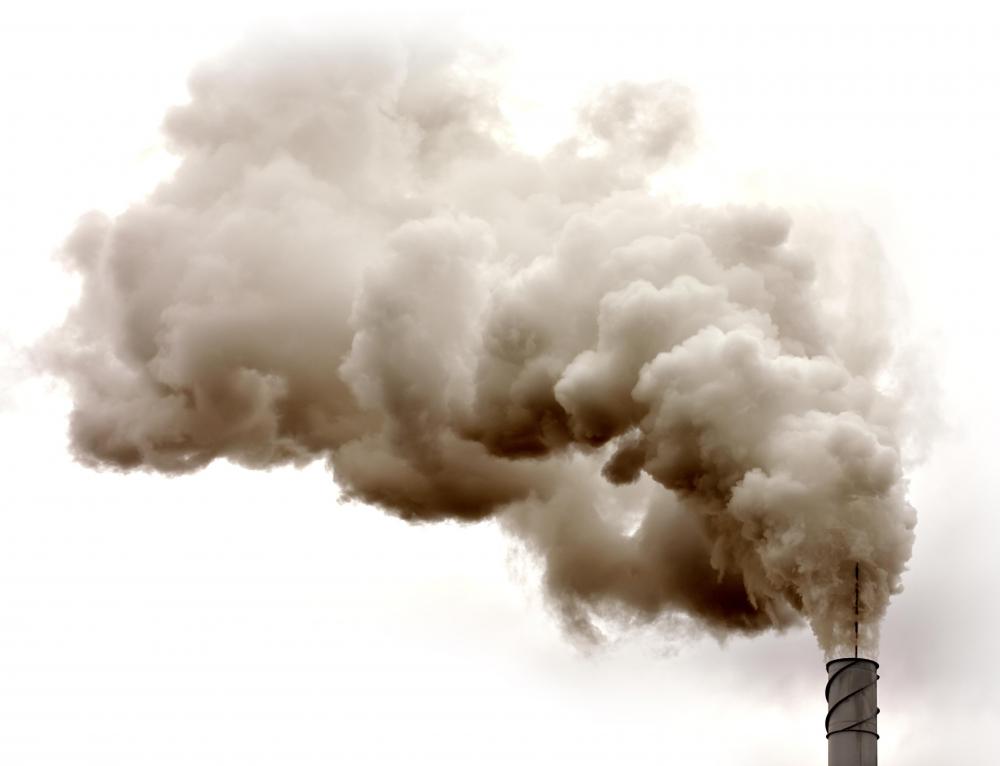At WiseGEEK, we're committed to delivering accurate, trustworthy information. Our expert-authored content is rigorously fact-checked and sourced from credible authorities. Discover how we uphold the highest standards in providing you with reliable knowledge.
What is Acid Precipitation?
Acid precipitation is more commonly referred to as acid rain, but can also mean sleet, snow, fog, or mist with an unusually high acid component. Precipitation is generally considered to be acid if the pH is lower than 5.6, compared to pure distilled water, which has a pH of 7.0. Acid precipitation is considered by many experts to be a potentially environmentally devastating phenomena often associated with global warming and high greenhouse gas levels.
Certain chemical emissions, such as sulfur or nitrogen dioxide, are considered mainly responsible for increased levels of acidity in precipitation. When these chemicals are released into the air, they can mix with water-bearing chemicals and become part of the cloud makeup. When a cloud releases water in the form of rain, snow, or sleet, the absorbed chemicals increase the acidic content of the water, resulting in acid precipitation.

High levels of acid rain are linked to areas with heavy industrial usage and high vehicle density. The emissions from cars, buses, and industrial plants are all associated with high levels of acid in precipitation. In the United States, the Northeastern states typically show the highest level of acid precipitation, which most experts consider to be a direct result of the urban and industrial density throughout the region. According to some studies, average acidity levels for precipitation in the Northeastern states can be as low as 4.3 on the pH scale.

The damage caused by acid precipitation has long been studied but is only recently being given serious attention. Studies on acid rain have been conducted since at least the 19th century, when Scottish scientist Robert Angus Smith published a book on the effects of local industry pollution on air, land and local agriculture. Since Smith’s time, detailed scientific studies have suggested links between acid rain and severe ecological damage to water sources and soil as well as human and animal existence.

Acid precipitation can be devastating to both freshwater and marine ecosystems. In addition to raising the acid content of the water, high acid levels can also deteriorate bedrock systems, allowing hard metals stored in the rocks to seep into the water. Many experts attribute falling fish counts to a buildup of mercury in fish habitats, largely due bedrock excretions of the chemical.

High acidic content in rain and other forms of precipitation can also destroy the nutritional value of topsoil, starving crops of necessary nourishment. The alterations to soil makeup can prove deadly to certain plant species, such as maple trees, that are dependent on low acid soil in order to grow. Some studies suggest that the centuries-old market for maple sugar and syrup is greatly endangered thanks to loss of maple trees.

Even human invention risks damage from acid precipitation. In urban areas with high levels of acid rain, monuments, historical buildings, and artwork exposed to the elements are often endangered by acid rain. Traditional building materials such as marble and limestone include a calcium content that is easily damaged by high acidity, while metals like copper and bronze quickly oxidize in acidic conditions, leading to blemishes and discoloration. Famous buildings such as the Parthenon, the Lincoln Memorial, and the Taj Mahal are all under careful observation after showing signs of material erosion thanks to acid precipitation.
AS FEATURED ON:
AS FEATURED ON:
















Discussion Comments
OK! And why are they harmful? I love your page.
Carlos B.
Post your comments